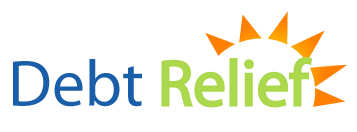Does reading your credit report make you feel like this?

Getting a copy of your credit report is simple to do right from your home computer using AnnualCreditReport.com. When you have your credit report, you'll be able to see what your creditors are saying about you. However, credit reports can be a little confusing and very intimidating. In this post, you'll find a step-by-step explanation of how to read and interpret your credit report.
Section One: Your Personal Information
Here you'll find identifying information like your:
- name
- current address
- social security number
- date of birth
- spouse's name (if applicable)
Don't just skim over this section. Make sure everything is correct. One bad piece of information and the credit history listed on your report could be wrong.
Section Two: Credit History
The Credit History section contains a list of your open and paid credit accounts and indicates any late payments reported by your creditors. It is extremely important to read through this section very thoroughly. If you find any information that is incorrect or accounts that don't belong to you, you'll need to submit a dispute letter to the credit-reporting agency.
- Company Name - identifies the company that is reporting the information.
- Account Number - lists your account number with the company.
- Whose Account - Indicates who is responsible for the account and the type of participation you have with the account. Abbreviations may vary depending on the reporting agency but here are some of the most common:
- I - Individual
- U - Un-designated
- J - Joint
- A - Authorized User
- M - Maker
- T - Terminated
- C - Co-maker/Co-signer
- S - Shared
- Date Opened - This is the month and year you opened the account with the credit grantor.
- Months Reviewed - Lists the number of months the account history has been reported.
- Last Activity - Indicates the date of the last activity on the account. This may be the date of your last payment or last charge.
- High Credit - Represents the highest amount charged or the credit limit. If the account is an installment loan, the original loan amount will be listed.
- Terms - For installment loans, the number of installments may be listed or the amount of the monthly payments. For revolving accounts, this column is often left blank.
- Balance - Indicates the amount owed on the account at the time it was reported.
- Past Due - This column lists any amount past due at the time the information was reported.
- Status - A combination of letters and numbers are used to indicate the type of account of the timeliness of payment. Abbreviations for the type of account are as follows:
- O - Open
- R - Revolving
- I - Installment
- Date Reported - Indicates the last time information on this account was updated by your creditor.
Section Three: Collection Accounts
If you have accounts that have been referred to collection agencies in the last seven years, this is where they will be reported. The name of the collection agency will be listed along with the amount you owe and, in some cases, their contact information. If a collection is listed on your report that doesn't look familiar to you, contact the credit bureau and submit a dispute letter.
Section Four: Public Records
Here you'll find a listing of public record items that reflect your history of meeting financial obligations. Such as:
- Bankruptcy records
- Tax liens
- Judgments
- Collection accounts
- Overdue child support
Look closely at all the information listed here. If anything is mistaken, contact the credit bureau and submit a dispute letter.
Section Five: Additional Information
This section consists primarily of former addresses and past employers as reported by your creditors.
Section Six: Inquiries
Contains a list of the businesses that have received your credit report in the last 24 months. If you find the names of businesses that sound unfamiliar, you should find out who they are and why they're looking at your credit! The credit-reporting agency may be able to help you with contact information.
If you find out that you have more debt that you thought and need help ELIMINATING YOUR DEBT once and for all, our Debt Solutions Specialist can help you find the right program to fit your goals. Click the link below to get a FREE Debt Summary based on your debt and start heading towards becoming debt free today!
photo by: Kay Kim







